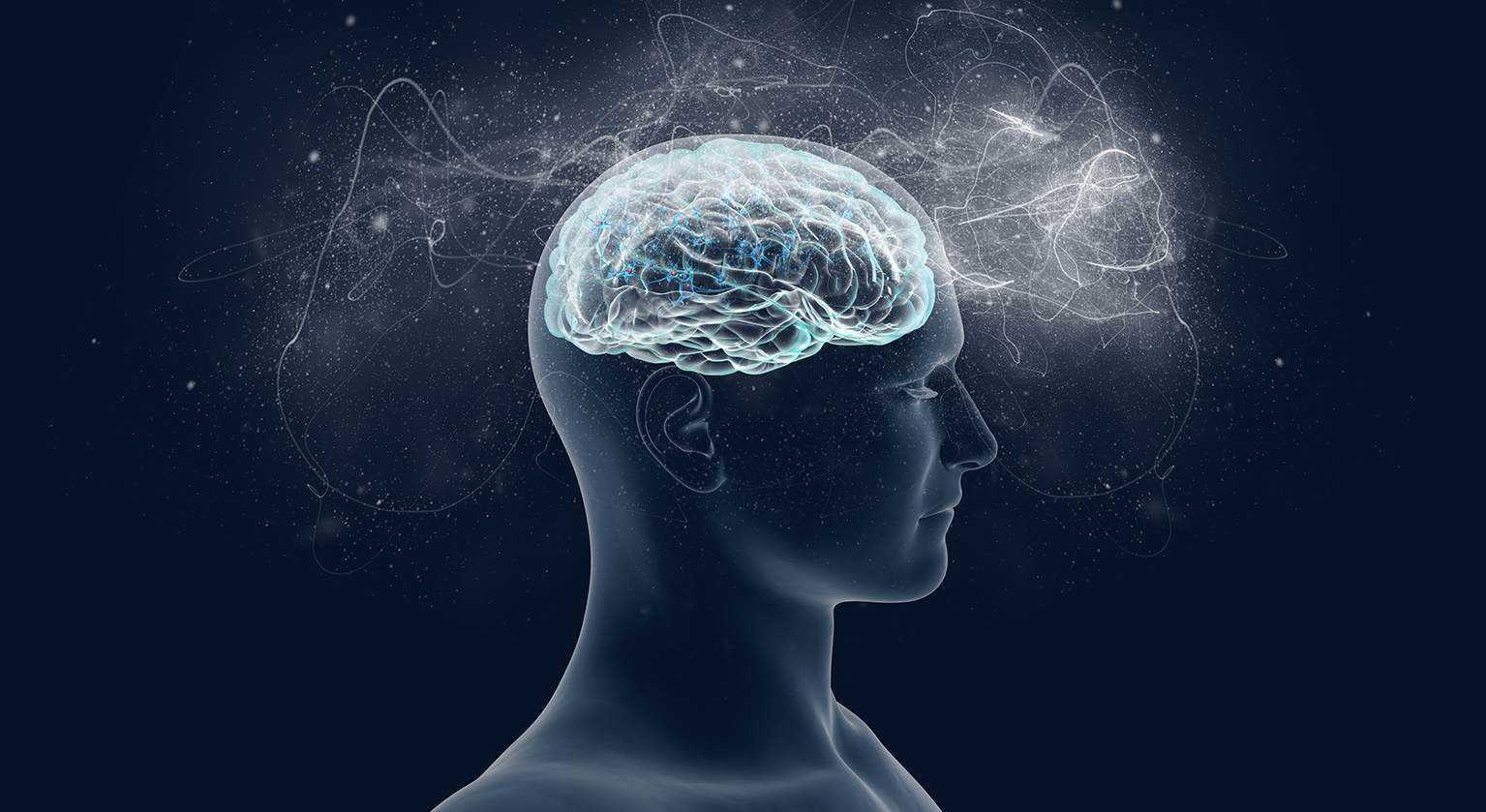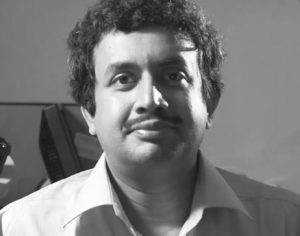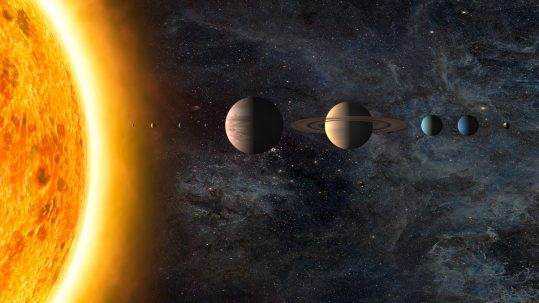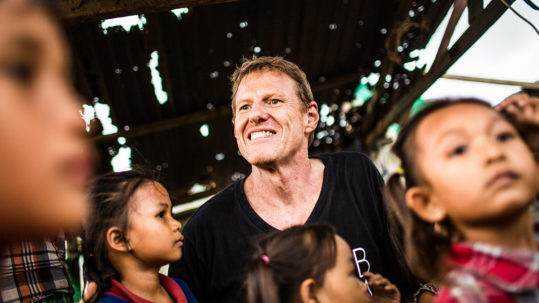
04 Oct Anirban Bandyopadhyay
Photo: Free of Rights
ANIRBAN BANDYOPADHYAY
Born into a musical family in Bengal, India, Dr Anirban Bandyopadhyay is recognized as the creator of the ‘Nano Brain’, an artificial brain which mimics the human brain. Dr Bandyopadhyay is a senior scientist at the National Institute for Materials Science (NIMS) in Japan. He holds a Masters of Science in Condensed Matter Physics, Computer, Numerical Analysis, and Astrophysics from North Bengal University and a PhD in Physics from Jadavpur University. A discussion on consciousness, on the mysteries of the universe and on the ‘Nano Brain’.
By Victoria Adelaide | OCT 23. 2017

Photo: Courtesy of Anirban Bandyopadhyay
Victoria Adelaide: You were born into a musical family in Bengal, India. You were initiated very early into music, as well as the Vedanta philosophy, from which your interest in human consciousness arose. What is consciousness?
Anirban Bandyopadhyay: I think that consciousness is being with the universe. Every living system, every conscious being is a part of the music that is played by the universe. The universe is conscious because it plays all kinds of music imaginable, so it can sing in any single way, all imaginable tunes can be composed, it knows how to sing everything. We are conscious, because we can sing in tune with the universe. I use ‘singing a song’ not just as a metaphor of vibration. When I say ‘singing a song’ I mean a flow of tunes in multiple different rhythms composed or interlaced with each other. It is not a metaphor, like I have a physical parameter and I want to use that to make common people understand some complex physical entity, no, this is nothing like that. When I say ‘song’, I mean it, but I mean more than just a song. Imagine an entity, suppose it’s a football, and you are looking at it from different directions, when you look at it from the top or try to hear it from the top, you hear one kind of music; when you listen to it from the bottom you hear something different, and when you listen to it from different sides, you listen to different music.
Music is created by plants, by living creatures, everything. We hear music as one-dimensional stream of vibrations, it just goes on with time, it goes up and down, but when it goes into our mind, it creates a 3D interlaced geometric shape. So when I say music, or song, I mean much more than just a linear streamline song or rhythm that we hear. I think this is the key. Many of the sounds for example ‘Hummmm’ (singing the sound with closed mouth), this kind of bonding sound, you can find an eight-like or infinity shape like topology hidden in it, as in the vedic hymns, mantras or Tibetan chants, especially tribal chants in different parts of the world. Somehow they understood the language of the universe much better than us, by living with nature intimately. Because when we take them and try to see the hidden topology, we see those sounds are much more profound than our human languages or even our scientific languages like equations or mathematics.
VA: You have a theory about what you call a ‘chain of resonance’ which links everything from the smallest dimension to the entire universe. Can you explain, what is the ‘Chain of Resonance’?
AB: Suppose we have a clock on the wall or a wristwatch; one clock is moving and counting the hours, one clock is moving and counting the minutes, another clock is moving and keeping the time in seconds. When there are sixty seconds you have one minute, and then sixty minutes you have one hour, and then twenty-four hours you have one day and so on. When we were doing the experiment, we found that a similar kind of clock also exists in the biological system. They are only keeping time like a geometric shape, and everything is executed. It took a decade between 2009 to 2016 for us to figure out how nature’s information looks like. The question is simple, but an eternal one, how information in nature actually looks like, and how does it integrate.
We are not the first ones to talk about clocks in biology. For example, circadian rhythm was introduced by Franz Halberg in the 1960s, so rhythm exists in the living systems. We are clocks, and rhythms of life is a concept that haunted scientists for ages. But, no one knew or ever proposed how those clocks are connected. We know that our body clocks are in synchronisation with the motion of the planet or the galactic bodies. These kind of associations were studied exhaustively even to the single cellular scale. What our contribution was that we started from the millisecond clock of the neuron and we went inside to microsecond clocks in the giant protein complexes and when we went inside them we found nanosecond clocks in the singular protein scale, and inside them we found the picosecond clocks in the secondary structures, and inside them we found picosecond clocks in a group of atoms. So clock inside the clock inside the clock inside the clock inside the clock, which we humans created, we use it on our wrist, is out there in our body to keep time. Similar kinds of clocks are also there in the biological system but it does not end with a neuron pairing. So before people did noticed the clock, inquisitive scientists did much to understand our clocks and the mechanism, but did not go deep inside it. No one ever thought time could be connected in a geometric shape to process everything that we see, that we feel.
So when we say ‘chain of resonance’, basically we are saying that the clock does not stop anywhere. Like with our watch, it starts with hours and it ends in seconds. So there are three layers, hours, minutes and seconds. But in biology your whole life could be one clock of a hundred years. “Tick” one clock, and then there could be a thirty-three years clock that is three of them, and then could be twelve years clock and then could be one year clock, and then there could be three months clock and then there could be twenty four hours clock, then could be one hour clock, minutes clock, seconds clock, then milliseconds clock. So when you are listening to me, actually your brain is processing information in two hundred milliseconds, in between that you have no idea what is happening out there. So in two hundred milliseconds you are able to get the conscious experience then below two hundred milliseconds you have a microseconds clock, there are some components which are vibrating inside your neuron. And then the proteins are vibrating to open the ion channels in nanoseconds, then to open the protein, the single ion channel there are some other components which are clocking in picoseconds. So the clock inside the clock inside the clock, we are suggesting, does not stop at any point, there is an endless chain of clocking. So we should not stop it at a certain place or time. So that is our scientific contribution.
So the clock was there, at the picoseconds level, people measured it. However, the historical irony was that very fast clocks and very slow clocks, biologists and biophysicists measured. We bridged the gap, we say do not stop it anywhere you have to go beyond and both ways, towards faster and towards smaller time scale. The second thing that we contributed about the clock, is that when you look at your watch, it ‘ticks’ everywhere ‘tick tick tick tick tick tick…’ sixty times ticks and you get one minute, sixty minutes ‘tick, tick, tick…’ equal interval and then you get one hour, and ‘tick tick tick.. ‘ twenty-four times and you get a day. So it ‘ticks’ at every single position, at every single point, but we discover that in our bodies’ biological clock, the ‘ticks’ hold a geometric shape. For example, you have a clock, the clock ticks at twelve o’clock, four o’clock and eight o’clock, so ‘tick – tick – tick’, so you’ve got a triangle. Now if it ticks at twelve o’clock, one o’clock and eight o’clock then what would it sound like? “ticktick – tick- ticktick – tick” (13.15), twelve o’clock, one o’clock and eight o’clock, so your triangular shape changes, in this way biological systems store nature’s information, possibly nature is also doing the same everywhere in the universe.
So these are the two concepts that we have started. First never stop the clock, clock inside the clock inside the clock, is the universal chain of resonance that is everywhere in every part of the universe, secondly do not ‘tick’ everywhere, ‘tick’ when you want to store a topological structure or geometry. So it’s a geometric shape that is everywhere. So what is so exciting about it? The most exciting part about it is that, the information is not in the ‘tick’, or in the burst of sound or energy, it is in the silence. So you say twelve, then after that you wait until four o’clock and then after that ‘tick’ you wait until eight o’clock and after that you wait until twelve o’clock again. Your silence actually holds the actual answer. The topology of silence holds the actual information of biology and also in every complex system integrating the information of the universe.
We do it every day, it was not just part of science, how? For example, somebody asks you ‘What are you doing?’, you say ‘Nothing’ (peaceful tone), you could say ‘Nothing’ (furious tone) or you could say ‘Nothing’ (dreamy tone), so N-O-T-H-I-N-G, seven ‘ticks’ are there, but you change the time gap between the letters to give a completely different kind of meaning to another path. So your information is not hidden in the ‘tick’, it is hidden in the silence. Scientifically in the topology of the vibrations. That is what we say is a fundamental shift from the existing Turing of information processing that existed in the last hundred years, so you know Turing’s philosophy, you know Godel’s theorem, based on which our existing world was created. In those philosophies we believed that every single piece of information is an event in the universe, and could be explained as a series of simple events happening one after another. So this was what we believed for hundreds of years, and that’s how the Turing machine, Turing tapes and all this kind of scientific concepts came, and we still strongly believe in that philosophy in every day of our life. Even we tell our kids, “do it step by step, not all together”. Unknowingly, it is defining human civilization in every single way.
The current computer revolution and many people who want to make artificial brains using computers, they are knowingly or unknowingly believing in that philosophy, that every single event that is happening in the universe is actually a sequence of simple events. Whatever the complexity of the event you describe, if I know it correctly I should be able to explain it simply as a sequence of simple events. How simply, just switch zero one zero one, click clock click clock click clock, and I should be able to explain it. Everything. But we challenge that. When we say clock inside the clock inside the clock inside the clock inside the clock, then we simply say that no event in the universe could be expressed as a sequence of simple events. It’s not possible. Because they are 3D geometric shapes, events are connected one inside another topologically, connections are undefined, you cannot make an equation. So if you want to convert it into a straight line, as events happening one after another, you will not be able to do so, because you are losing the topological information of the geometric structure. This is where we actually challenge the very foundation of the information theory existing for the last century.
So this is the point where we want to go ahead and we want to say that the whole universe is playing a topological game. It is changing topology, and then how is topology connected to music? Now you know it, because ‘tick tick tick”, so your clock has three ‘ticks’ so you have a triangle, and that triangle is basically a clock, so ‘ticktick tick ticktick tick ticktick tick ticktick tick ticktick tick ticktick tick‘ is one rhythm. Somebody has a hexagon, it will have its own set of ticks, and when all are played together, then you get a music, and that is the music that we are talking about. Since it is a 3D topological shape, it looks very different from different directions. That’s why I said that the music is very different from conventional music. Conventional music is just one line, that in your brain creates a topology, that’s why a particular music gives very different kinds of feelings to very different kinds of people. Because every person perceives a very new kind of topology from a particular set of music, and the more complex the geometry, the more different the way you perceive it. I think that every part of the universe is actually doing the same. It is doing it in a topological manner, but this science of making a journey to singularity, or to the undefined does not exist. We are trying to build that science, how to make a walk inside and inside and inside…
We are at a very primitive stage. Our contribution is like back in the 1920s or 1930s when new information from Turing was being born. At that point of time we had no clue that we would create a new civilization. Our work is also quite primitive, so many many scientists will come to evaluate, review, or critique our proposals and improve them, and then we will not be here but somebody sitting in 2050, 2080 will say okay, at that point of time that guy said this and that, had lots of ideas, but we corrected it, rejected most of it and then finally we came up with something far better. From that point our contribution would be negligible. But we are here I believe in a historical moment, when we challenge the very simple idea of what information is, because when we do that, everything is bound to change. Everything. So instead of physics equations you will have a changing geometric shape. Imagine, instead of a physics textbook full of equations, you have some animated image that is changing geometric shape and a kid in the school in 2100 AD is saying, that’s E=mc2. You will have a geometry of change in the geometric shapes, no equations and everything is undefined, we are going inside and inside and inside.
Not just science, the foundation of human thoughts and philosophy would change. So if I ask you for example, about a very simple thing that we learn as a kid, walking, remember the debate between Socrates and Zeno, smaller we go, there is no motion. We interpret our philosophy a bit differently. If I ask you ‘What is your name?’ or ‘Who are you?’, you can say “I have these eyes, this nose, this hair, etc.”; and then I can go to a particular component and I ask ‘Who are you, are you the heart?” and you’ll answer “ Well I have this blood vessel coming from here and going there, I have intelligence, all these kinds of other things..”, and I can go inside and inside and inside, I can go to a single atom and that is not even the end. I can go on asking questions ‘Who are you?’ and the absolute final answer would never come. We rejected to live with this situation in the 1880s with Cantor, but we are asking now again, lets try.
So we need a science for that particular journey, we never had it, we never build it, but the time has come to create that kind of science, left 150 years back. Sometimes, I think that we are initiating a very aggressive stance on building this kind of science without proposing philosophical arguments more seriously or engaging into the philosophical theories, just getting into the laboratory, doing experiments, trying to find more and more evidences. Most of our journey is walking in the experimental systems, without using imagination, this concept I am presenting you, did not came one fine morning in the bright sunlight as you read in the science stories. It was done in the dark night doing crazy experiment of measuring information more and more accurately, extrapolating it as little as possible. We are not philosophers, we do not want to simplify our statement, or change our statement, make a beautiful metaphor so that it becomes popular. We have no intention of reaching out to the common people and telling them ‘Look, this is so exciting!’, this is wasting our time. We should rather use this time to figure out what is the truth and accurate, even based on our work, there is no absolute truth, it can never have. There were plenty of philosophers and many philosophies exist, on the topic of consciousness and on the processing of information in the brain there are thousands of theories. On consciousness, everyone has their own theory on consciousness. I have one perception of what consciousness could be, but that is based on simple experiment, what we have done, so I don’t say that is absolute but it keeps on changing as time goes by. Possibly, it is something in the changing geometry of a changing geometry of a changing geometry….
VA: You’re Senior Scientist of Material Science at the National Institute for Material Science [NIMS] in Japan. Your all-time dream was to build an artificial brain, which you did. You’ve created ‘Nano Brain’, an artificial brain which mimics the human brain. Can you tell us more about your invention?
AB: Basically when we say the clock inside the clock inside the clock inside the clock, it’s how biology is made. In science when you propose some theory, we have to make experimental prototypes, to prove that the principle works. Since we came up with the principle of clock inside the clock inside the clock, I felt that it was my responsibility to build systems that are alternatives to protein and the biological structure. Plus that particular philosophy of clocks, we can carry out, similar to the way a biological system can build circuitry, just like an artificial brain. We started with the very elementary molecules, a single molecule, instead of molecules and then starting to building up structure and more and more complex architectures, organically, not forcefully by synthesis. It was a new kind of assembly formation, namely fractal condensation, just the way a biological system heals us. That’s where the concept of Nano Brain came from. So whatever we learned from the biological system we used to implement it, seeing information in the growing organic molecular system, artificially. So that by seeing it’s topology of time we can confirm that we’re working on the right track.
VA: You also want to create several generations of the ‘Nano Machine’ to be able to cure diseases such as Alzheimer’s, cancer etc… Can you give us more information and do you know when that might be available to the public?
AB: We built it already and tested it, currently we are carrying out extensive toxicity tests on animals. ‘Musiceuticals’ like pharmaceuticals, is our dream. Basically you apply music and you treat the disease by reversing the protein folding directly by applying suitable vibrations or using nano-bots. All our diseases eventually affects misfolding our proteins, so proteins misfold, breaks apart, get destroyed, that’s why we get threat to life. If we can do the reversal of wrong conformation to the right one by applying a certain set of vibrations, we can cure disease wirelessly. We have seen experimentally that we can reverse the misfolding of proteins, one can cure the protein folding and delete disease effects at the molecular scale. So we wanted to build Nanobot on Nano systems, which will go inside a body, ‘talk’ to the proteins and ‘talk’ to the biological systems, and make them understand ‘Do Good’.
We are trying to build a universal language, the language of the universe. For example, the language by which the universe speaks, think of clock inside the clock inside the clock inside the clock inside the clock and the topology that I described at the beginning of our interview, so that is what we call the geometric musical language, the language that we believe everybody speaks. So if I have understood this language properly, then I should be able to make some tiny machines that would go inside the body and talk to the cells and say ‘Look, don’t do this kind of thing, this is not good’. Instead of chemically cleaning or destroying. I am against Darwin’s version of evolution, for the same reason I’m against the existing pharmaceuticals which ruthlessly kill the nasty ones and the good ones also. So nasty ones are the enemies and need to be destroyed, I’m not saying that we will keep the cancer cells, but we can reprogram them to dominate or terminate.
What are cancer cells? Cancer cells are the naughty boys who refuse to listen to the instructions of the living cells. All our body continuously tells all the cells ‘live, live, live’, when they stop saying ‘live’, then they destroy themselves. So something like this is apoptosis. I think that cancer cells just naughty boy, free from body’s slavery. Alzheimers, how does Alzheimers form? Alzheimers forms because of beta plaques. All our body continuously gets rebuilt, for example you get a new skin in eleven days, you get a new bone in eight years, every three months you get a new pool of blood, every nine months you get a new kidney, all of your body components get changed, continuously rebuilt. Why do you age? You age because when all these musical rhythms running the cell regeneration process in your brain, it is leaving deposits at around every single neuron structure of the system which is not cleaned out of the brain, by glial cells or clathrin etc. You have lots of dust, big big clusters of dust on your musical instrument’s string, then when you try to play the string it does not play the right music. That’s why your body does not get regenerated fully as it should be. So basically we found that brain deposits are the vibrations, which we can control because we found that the beta plaques which are putting down deposits are actually fractal antennae, they are a very powerful and complex antenna system, which needs to be destroyed. That’s why if it is an antenna, and it sings a complex music, we can sing alternative music to let it change signing fatally. So that’s what we built in the nanobrain, it is a generic world where you can put molecular nanobots to do wonderful things. Everything is a vibration, so using a rhythmic way, or a language of vibration is the way to talk to the system. It is redefining medical science using the musical instrument made by us by learning the language of nature.
VA: Getting back to Nano Brain. When will it be available to the public?
AB: Nano Brain was published in 2014, 2015 and 2016. We are publishing technical papers in organic chemistry, we have filled nearly six patents on that and we have already tested on animals, though no testing has been done on humans. Animal tests are finished and we have got very good results. We will check for many different kinds of cancers and Alzheimer, in the coming days. A few days ago I had a meeting with some professors in India, who are going to use our protocols extensively to cure Alzheimer in the old rats by treating them with our protocols and giving them complicated problems so they can remember things or not. The design of this experimentation will be done by applying vibration and some other protocols.
VA: You are collaborating with Sir Roger Penrose. What are you working on together?
AB: We discussed a lot because Roger and Stuart helped me at the beginning to understand microtubule and many other systems, actual problem of consciousness in which they had been working on since 1995. I am a newcomer to this field. I started only in 2008. I used to work on computing but I was working on Turing-based computing, a system that was already in existence. I got fed up with that system and I was trying to find something new. Then I entered this field, in the initial days Stuart, then Roger and many other people, taught me the beginning part, how the system works and history of this research field.
VA: Can we expect at some point books regarding your research, discoveries and theories?
AB: I planned a book in 2010, every year I finish writing the whole book and then I delete everything and I rewrite it. I delete to rewrite the whole because I had not understood how nature processes information. If we do not know that then everything you search to learn in research is mis-directed, you can not see what you do not look at. Accidents are journalists creation, “eureka” happens because you seek it. There is no point in creating a book if we do not know what is information in nature, because every person whoever gets an opportunity writes one and if I don’t understand it completely or significantly enough, there is no point in doing it. So in 2016, I understood the information structure of nature totally, our decades old research started to make sense, I could connect the missing links. The things I’m saying to you, I understood completely in September 2016. In December 2016, I published it in a conference paper and the book will be published as a chapter in September 2017. New chapters are also coming up on the architecture of time. So this is very recently that I have understood the structure of information in the universe. So you will soon get to see the series of papers on the information, our theories, and then maybe within two or two and a half years, you will see the full book.
...We are trying to build a universal language, the language of the universe``




